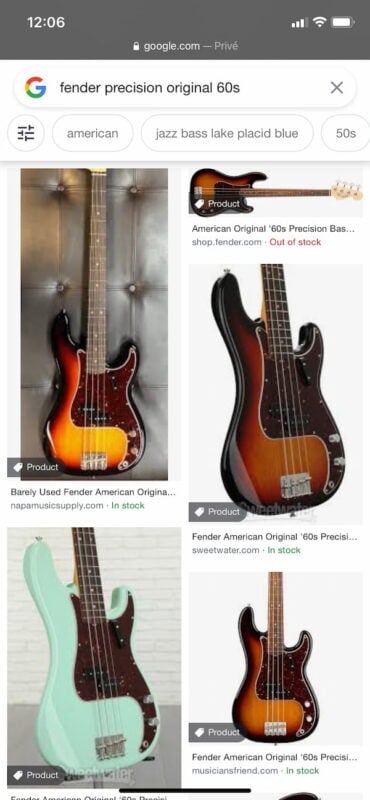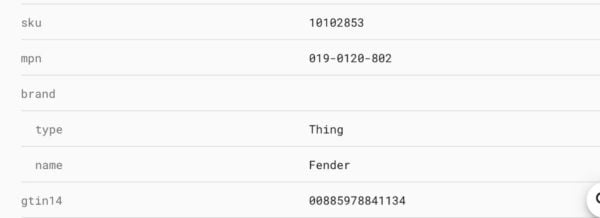Wealthy outcomes for merchandise with Schema.org structured information • Yoast
Edwin Toonen
Edwin is a specialist in strategic content. Before joining Yoast, he spent years honing his skills at the leading web design magazine in the Netherlands.
You often see them in search results: product lists with added metadata like price, availability, ratings, and specifications. However, not every website that offers the same product has the same rich results or rich snippets. There could be two reasons for this. First, Google doesn’t think the website is important enough to display additional metadata. Or second, the site was improperly expanded with Schema.org structured data. In this article, we will focus on Schema.org structured data for product lists.
Structured data for product snippets
The information in abundant results doesn’t just magically appear. You need to add the data so that Google can add it to the results. Even then, it’s up to Google whether your data is visible or not. Google uses structured data to create the large snippets in search results.
The structured data markup comes from an open initiative called Schema.org. Several search engines are developing this data format so that they can consistently interpret safe data. You can add all kinds of things such as: B. Product information, ratings and reviews, or information about your local business.
To implement structured data, you need to provide search engines with the right markup. Microdata, RDFa and JSON-LD are the most important technologies for working with structured data. JSON-LD is a lightweight data format that is easy to read for both humans and machines and is preferred by Google these days. Plus, Bing – an infamous JSON-LD holdout – jumped on the JSON-LD train.
 A rich result for a Fender Precision Bass on sweetwater.com
A rich result for a Fender Precision Bass on sweetwater.com
Yoast SEO and Scheme
Yoast SEO automatically adds structured data to the essential information about your website, articles, authors, and more. In addition, you can choose a specific schema that best describes that particular page. So you can say that your contact page is really a contact page. You can do this on the Scheme tab of Yoast SEO, directly in the sidebar, or in the meta field. Last but not least, developers can even extend it, as explained in the Yoast SEO schema documentation.
In the case of products, we can help increase the likelihood that Google will display extensive sections of your WooCommerce online shop in the search results. Our WooCommerce SEO plugin automatically adds structured data to your product lists to ensure that Google can get it properly.
Also works with mobile image search
By adding schema structured data to your products, it can be highlighted in regular search results and image searches. Google will add a product label to the images of your product so searchers can distinguish it from other offers. You will see that some retailers even receive a green warehouse label that indicates the product is ready to ship (see image below). Awesome, isn’t it?
For inclusion in the image search, Google needs a few properties. For the rich image lists, you must specify the name, image, price, and priceCurrency properties. If you want your product information to appear in the list of the related item, you must also provide all of the above information as well as the availability property.
 When looking for images of a product on your smartphone, you will find that several images have labels based on structured product data
When looking for images of a product on your smartphone, you will find that several images have labels based on structured product data
Rich results for a sample product
There are two types of product information that you can view in search results. A Product page describes a single product, while a Purchasing aggregate side describes a list of a single product and various sellers who offer that product.
Your landing page should contain a Schema.org product type. This is the product you are selling. It should also contain a nested offer type. This type describes how the product is sold. This includes the condition, price, availability, etc. of the item. You should present the data in HTML and not rewrite it in JavaScript.
There are a few guidelines that you must follow in order to work with product markup. For example, you can only use it for individual products, not for a product category. You can’t use it on adult products, and a reviewer’s name must be a valid name or team.
Example structure
The following code describes an example product. In this code, you can see different pieces of the Schema.org code and the way JSON-LD represents them. Some highlights:
- Type: Describes what type of product it is
- Name, picture and description: These are pretty obvious
- Brand: The brand of the product
- Thing: A thing is the most general kind of object
- aggerateRating: A nested overall rating of the product
- Evaluation value: This is the average rating of the product
- reviewCount: The total number of reviews
- sku: Dealer-specific identifier for a product.
- mpn: A type of global identifier can also be isbn or gtin13, for example
- offers: This is an indication that the product is for sale
- Offer: An offer to provide a service or to sell a product
- Price Currency and Price: These are pretty obvious
- Availability: If the product is currently in stock
- priceValidUntil: Use this to describe when the currently set price changes – useful in the event of a sale. Not required, though Search Console groans about it
- Url: A link to the product page
- Review: A written evaluation of the product as well as an evaluation
- Type: The Schema.org type is a review, of course
- Author: Who wrote it? Must be a real name
- Release date: When was it released?
- Description: The main text of the review
- Surname: The title of the review
- reviewRating: What grade did it get (1-5)
- Band Aid: Five is the max
- Evaluation value: The rating given by the reviewer
- worst rating: One is the lowest
This is just the tip of the iceberg. You can add other things to your page: availability, different types of product identification, model, color, height, depth, etc. In addition, there are new possibilities to set further details about your shipping agreements with OfferShippingDetails. In addition, Google now also shows your price reductions in the search results. To do this, Google calculates sales prices based on historical price data for your product.
 You can help Google identify this Fender Precision Bass by entering the SKU, MPN, GTIN14, or other relevant product identifier
You can help Google identify this Fender Precision Bass by entering the SKU, MPN, GTIN14, or other relevant product identifier
Sample code
Here is an example of a product page scheme.
Ratings and reviews
One of the most striking elements of a fully sculpted, rich result is a review star. However, getting these is not as easy as it used to be. You can check out ratings and reviews in another article, but I want to highlight them a little here as well.
Note that there is a small but significant difference between a rating and a rating. A rating is a value that a product receives on a scale from one to five. A review uses the same scale but also adds written explanatory text to the assessment.
 The number of ratings and a star rating shown in Google for that bass
The number of ratings and a star rating shown in Google for that bass
In the code example above, we added a section with ratings and ratings. This type of information can be retrieved from Google and shown in search results right next to your product list. A few years ago, Google became much stricter in determining what types of products could get stars in search.
WooCommerce & Product Structured Data
WooCommerce is the go-to platform for WordPress users who want to run an online shop. While WooCommerce automatically outputs structured data for products, it doesn’t do it in a very integrated way. This will typically append the product schema to the page instead of integrating it with the rest of the structured data on the page, such as any website and brand data. There is a solution for this: the WooCommerce SEO plugin.
The WooCommerce SEO plugin is an add-on that integrates the entire product schema into the structured Yoast SEO data diagram. In this way, your product data is connected to your website data, which means happy search engines and a greater chance of complete, rich results. It also fixes some annoying bugs that are common in the search console.
Help your online store stand out!
Get this and much more in the Yoast WooCommerce SEO Plugin!
Rich results for products are just the beginning
We only showed you the tip of the iceberg. There’s a lot more you can do with Schema.org, and you can add tons of terms to make your entries even bigger. Schema.org is a treasure trove for structured data vocabulary. See pending.schema.org for upcoming terms.
Remember, you should never give wrong metadata to Google. So don’t forget to test your code with the Rich Results Testing Tool!
Read more: Structured Data Using Schema.org: The Ultimate Guide »